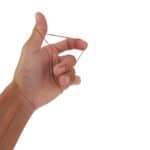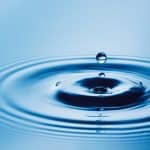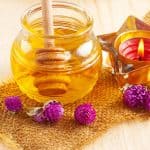Ayurveda is an ancient system of medicine originating in India said to have been transmitted by Brahma, the Hindu deva of creation, anywhere from 5,000 to 10,000 years ago. The word ayurveda comes from the joining of two Sanskrit words, “ayur,” meaning life (as a combination of the physical body, the senses, consciousness and the soul) and “veda,” meaning knowledge.
Ayurveda is not a practice of specific treatments. It is not like the Western model of taking a prescribed medication for an ailment. Ayurveda is a way of life that is intended to create balance, harmony and peaceful living. While the Western model tends to approach health in a somewhat linear fashion – the patient is ill, the patient gets diagnosed, the patient gets prescribed a pill or treatment for a cure, the patient gets better – whereas the Ayurvedic model is more cyclical in nature, observing and treating the individual’s body, mind and spirit as a whole with parts continually influencing each other. An Ayurvedic evaluation takes in the person’s lifestyle, personality, diet and many other aspects of the individual. Ayurveda does not just evaluate a person at the time of illness, but consists of constant monitoring with regard to balance of one’s physical and mental well-being.
The Three Doshas
One important aspect of Ayurveda revolves around the “Five Great Elements” – earth/prithvi, water/jal, fire/agni, air/vayu and ether/akash. Combinations of these elements form the three bioenergies, or principles referred to as doshas (also referred to as Tri-dosha). Referred to as Vata, Pitta and Kapha, they are used to define an individual’s physical and mental characteristics.
Everyone has aspects of the three doshas. The difference lies in which one or combination is predominant. Each person exhibits tendencies that can be determined analyzed by a healing professional educated in Ayurvedic principles.
- Vata – is a combination of air and ether. The word Vata means “wind, to move, to flow, to command or direct.” It is considered the most important and influential of the doshas. Within the body it rules over the process of elimination through bodily fluids, such as urine, sweat and feces. It helps control movement, both physically and mentally, including respiration, heart beat and muscle contraction.
- Pitta – is formed by the interplay of fire and water. It has to do with transformation. Pitta is at work when anything to do with digestion, metabolism or thermo-genesis is occurring. Pitta can also be seen in the thought processes and other mental activities.
- Kapha – consists of the two elements, water and earth. It is the heaviest of all doshas, providing strength, substance and lubrication to the body. It helps to prevent the over-heating caused by friction within the physical body and provides the stability for grounding. It provides for the organized structure of the body, building it very much the same way a mason builds a house brick by brick.
The Importance of Diet in Ayurveda
Ayurveda ascribes foods with certain specific properties. These foods can help to keep balance in the body and mind. Some are related to taste, such as sweet, sour, salty, pungent and bitter. Some are associated with how it cools or heats the body. In some cases, herbs and spices may be added because their qualities can lend balance to the food and, by extension, to the individual consuming them. The herbs can also be used on their own because of intrinsic healing properties.
For example*:
Arjuna has been traditionally used for a variety of heart conditions. It supports circulation and the oxygenation of body tissues. It is often combined with Ashwagandha, also known as Winter Cherry. Ashwagandha is used for helping the body adapt to stress. It is also used to promote tissue healing as well as supporting sound sleep.
Although not technically an herb, guggul (or guggulu), is found in many traditional herbal formulations. Its historical use has been in restoring balance to blood cholesterol levels and for arthritis. Herbs such as bitter melon and gymnema have also been used to control blood sugar.
Additionally, there are many common spices that can enhance health, according to Ayurvedic traditions, including:
- Cardamom is used as a stimulant that strengthens the heart and lungs.
- Cinnamon aids digestion and inner cleansing, and can be used to relieve respiratory congestion.
- Cloves are a natural pain reliever.
- Nutmeg helps with relaxation and can help promote sleep.
- Black pepper helps to relieve swelling.
- Licorice is used to help balance blood sugar, aid in digestion and to reduce symptoms of bronchitis and asthma.
- Turmeric helps with digestion and reduces inflammation.
How Can Ayurveda Be Used in Massage?
The three doshas are seen in the psychological and physical makeup of the individual. Understanding the basic constitution of a person can help in deciding what massage techniques and oils to use, and how to use them to bring a person into balance.
In evaluating an individual, ayurveda looks not just at one dosha, but the relationship of doshas to one another. Which is predominant? Which is lacking or over-stimulated? How they are interacting with one another?
- Vata – A person who is very thin, has rough flaky skin, is anxious and worried, would most likely have an imbalance of vata, while someone who is mentally alert, creative, emotionally balanced and sleeps well would have balanced vata. The use of sesame oil would help to calm and balance the body. Massage for this body type is most beneficial in the evening and should consist of gentle strokes.
- Pitta – An imbalance in pitta might be indicated by someone who seems to be angry all the time, or impatient and frustrated. Physically they may suffer from rashes or other types of skin eruptions. They may also have digestive problems, including heartburn or even ulcers. A person with good digestion, with a personality that is decisive and bold, and skin that is healthy will have his or her pitta in good balance. For the person with a predominance of pitta, the use of sunflower or sandalwood oil would help cool the body. It is best for this individual to have a gentle massage in the middle of the day.
- Kapha – If someone is always experiencing nausea, breathing difficulties or needs to sleep a lot, they may be suffering from a kapha imbalance. It also shows up in lethargy, excessive mucus discharge and circulation problems. The use of corn or calamus root oil is best for this body type. Deep massage early in the day is best.
Knowing these things about doshas might tell you that a person with a pitta imbalance could potentially benefit the most from a light form of Swedish massage, something to cool the fire. A person with a kapha imbalance might prefer a slower massage, but may actually benefit more from something a bit more vigorous and stimulating – though a light massage like lymphatic drainage can help strengthen the immune system.
By adding the theories of Ayurveda to your practice, whether it is through massage or an overall lifestyle change, you will be able to have one more effective tool at your fingertips that will enhance the services you offer your clients and help bring balance in to your own life.
*Editor’s Note: Always consult a health care professional when seeking a diagnosis and treatment for illness. The herbs and spices in the article refer to traditional use as described by Ayurveda and should not be used as a substitute for medical advice.
Recommended Study:
Ayurvedic Massage Fundamentals
Deep Tissue Massage
Lymphatic Drainage Massage
Swedish Massage for Professionals















